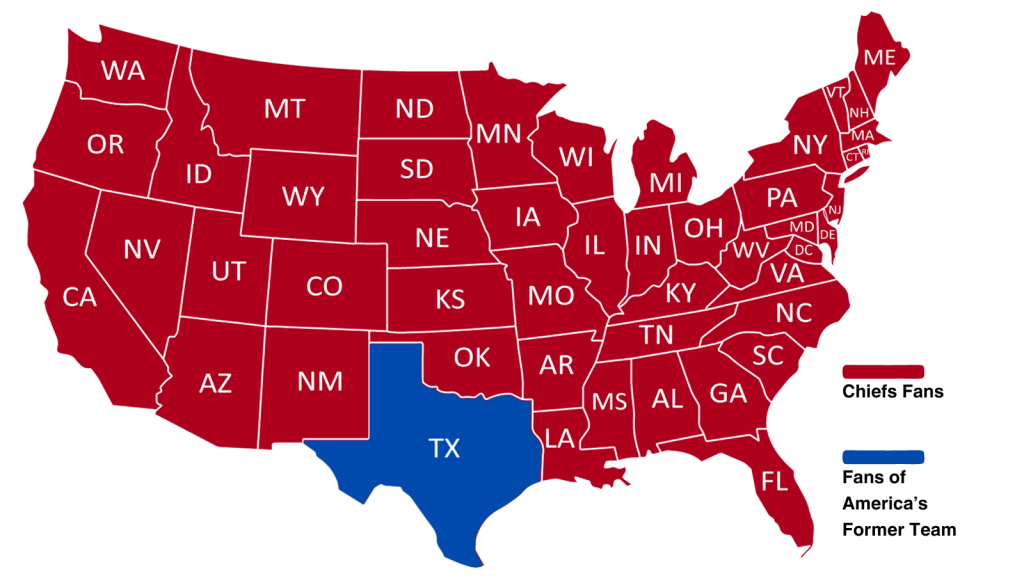Recently, I’ve found myself at the center of the biggest pop culture story of the year, both demographically and geographically. Demographically speaking, I fall into the coveted 18-35 year old female age group, and geographically, my family has recently relocated to my husband’s hometown of Kansas City. If you haven’t figured it out by now, I am absolutely talking about the romance of the century between Kansas City Chief Travis Kelce and arguably the biggest musical artist of my generation, Taylor Swift. Before you click off, the economic impact of these two individuals at the top of their game is astronomical, not just at the local level, but nationally. And we’ve got some map reworking to do of the NFL fandom.
Locally, I am constantly in awe at how quickly boutiques and stores can have Taylor Swift themed NFL and Chiefs merchandise out on the store floor. Information on the couple is reported on the nightly local news as if it were a weather report. And from her concerts this summer alone, the local economy saw a near $48M impact, which has only gone up since then. It won’t stop anytime soon, as travel guide Lonely Planet has named Kansas City on their top list of destinations to see in 2024. Business Insider spoke with local business owners who have seen an increase in profits since the start of the craze.
Nationally, her concerts have brought millions to each of the local economies that she has played in. Our channel partner, Placer.ai, did some research on the foot traffic around the concert venues. It turns out, about 30% of people who are by the venue don’t go in, they often just tailgate in the parking lots or go to local businesses, driving economic impact outside of just ticket sales to retail and dining experiences.
If you, like me, are in the prime demographic for hearing this news, your social media feeds are filled with all things “Traylor”. You might think about cheering for Taylor’s boyfriend on Sundays. Indeed, Chiefs Kingdom is rapidly expanding as you can see on the map below.

Pop culture has often been a driving economic force, but this will have a major economic impact on Kansas City and the surrounding area. Retailers, lodging, and dining providers all need to prepare for the rest of the season to keep up.


Recent Comments